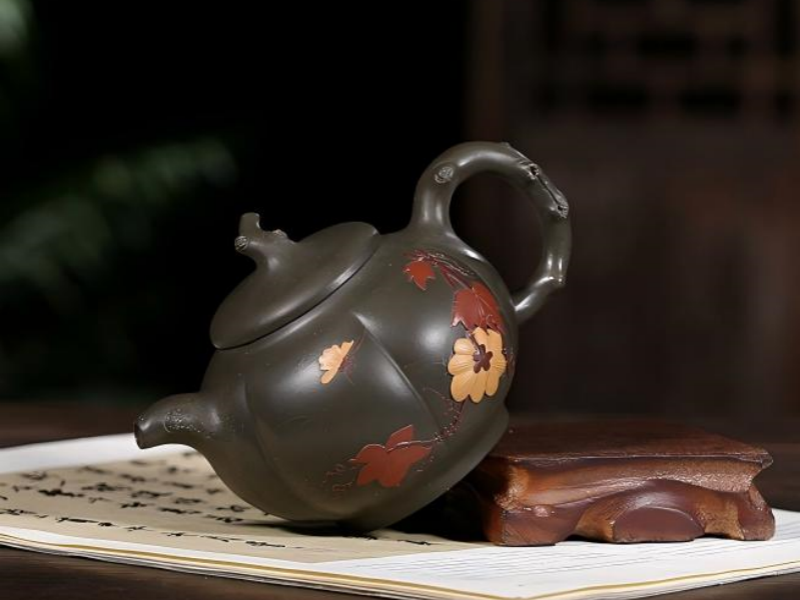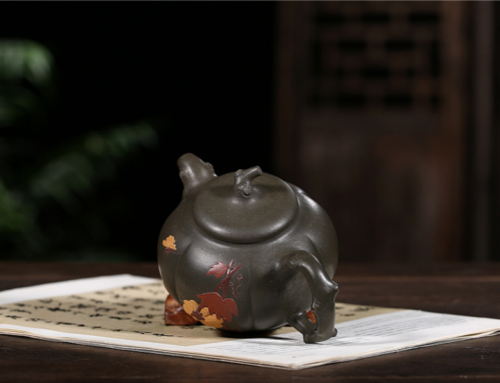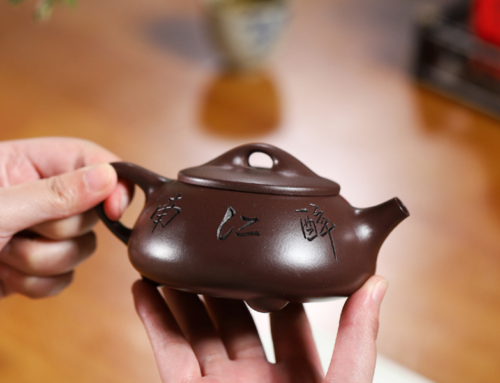Yixing Clay Teapot: The Source, Brief History, Characteristics and the Right Way to Brew
The History and Development of Yixing Clay Teapots
Enter the world of Yixing clay teapots, and you’ve embarked on a journey through more than 500 years of history. Appreciated by tea-lovers and collectors, Yixing clay teapots are cultural, artistic, and functional icons.
Ancient Origins
The tale of Yixing clay teapots originates in the hills of Yixing, a city in China’s Jiangsu Province. Here, among the mineral-rich hills, craftsmen stumbled upon a clay unlike any other. Known as Zisha, literally meaning “purple sand” clay, it was this fine, porous clay found only in the Dingshu area of Yixing that formed the basis for a centuries-old art form that forever changed tea culture. Historians date the birth of Yixing teapots to the Ming Dynasty (1368–1644), when powdered tea gave way to loose-leaf tea and the method of brewing tea underwent a revolution. The earliest documented examples of Yixing teapots date tohe early 16th century. An oft-repeated legend has it that the first Yixing teapot was made by a lowly temple worker, Gong Chun, who took inspiration from the gnarled root systems surrounding ancient trees. Gong’s creation sparked the imaginations of subsequent generations of potters, who experimented with form and technique to push the Yixing teapot craft to dizzying new heights of creativity.
Key Milestones and Evolution

Impact on Tea Culture
Yixing teapots didn’t just revolutionise the way tea was brewed—they also transformed the way it was experienced. The porous, mineral-rich Zisha clay absorbs the essence of tea, enhancing the flavour and aroma with each brew. This unique property gave rise to the practice of using each teapot to brew only one type of tea, allowing the pot itself to “remember” and enrich every brew.
Fact Box: Yixing Teapot Traditions
International recognition
By the 20th century, Yixing clay teapots had caught the eyes of collectors from far outside China and intrigued European purveyors of tea. Major museums in London, New York and Tokyo include rare pieces of Yixing ware in their permanent exhibits. Antique Yixing teapots regularly fetch enormous sums at auction, sometimes tens of thousands of dollars. Did you know? The oldest known Yixing teapot, credited to the hand of Gong Chun, can be found at the Palace Museum in Beijing. Some Yixing teapots from the Qing Dynasty are inlaid with gold and adorned with jade, a sign of the natural blend of decorative arts in Yixing craftsmanship.
| Period | Artistic Emphasis | Representative Artists | Significance |
|---|---|---|---|
| Ming Dynasty | Plain, practical design | Gong Chun | Individual Tea Brewing Originated |
| Qing Dynasty | Decorative, literary themes | Shi Dabin, Chen Mingyuan | Connoisseur Culture, Scholarship |
| Republic Era | Creative, international influence | Gu Jingzhou, Jiang Rong | International Prestige |
| Modern Day | Revivalism, industrialization | Present-day Masters | Global Collecting, Contemporary Tea Art |
Data Source: Protected Geographical Indication (PGI) Specification for Yixing Zisha Clay Products from Jiangsu Province PGI Registry
URL: http://www.cnipa.gov.cn/art/2020/7/1/art_2225_494.html
Data Source: Evaluation based on China Arts and Crafts Encyclopedia – Yixing Zisha Volume (《中国工艺美术全集——宜兴紫砂卷》) compiled by the Ministry of Culture and Tourism of the People’s Republic of China
URL: Official site: http://www.mct.gov.cn/
A Case Study of the Gong Chun Teapot
The early 1500s Gong Chun teapot is known as the “ancestor of Yixing teapots.” It was made by hand-molding raw Zisha clay into an unpretentious figure resembling the knotty beauty of ancient bark. Centuries after its making, the Gong Chun teapot’s greatest value is as a historic precedent, leaving future Yixing potters a valuable living tradition upon which to perfect the art and practice of Yixing teapots. The iconic teapot does more than simply represent the past: it also vividly reveals nature’s power and suggestibility. Above all, it proves that, through dedication, hard work, and engagement with the natural world, individuals can bring to life something truly extraordinary.
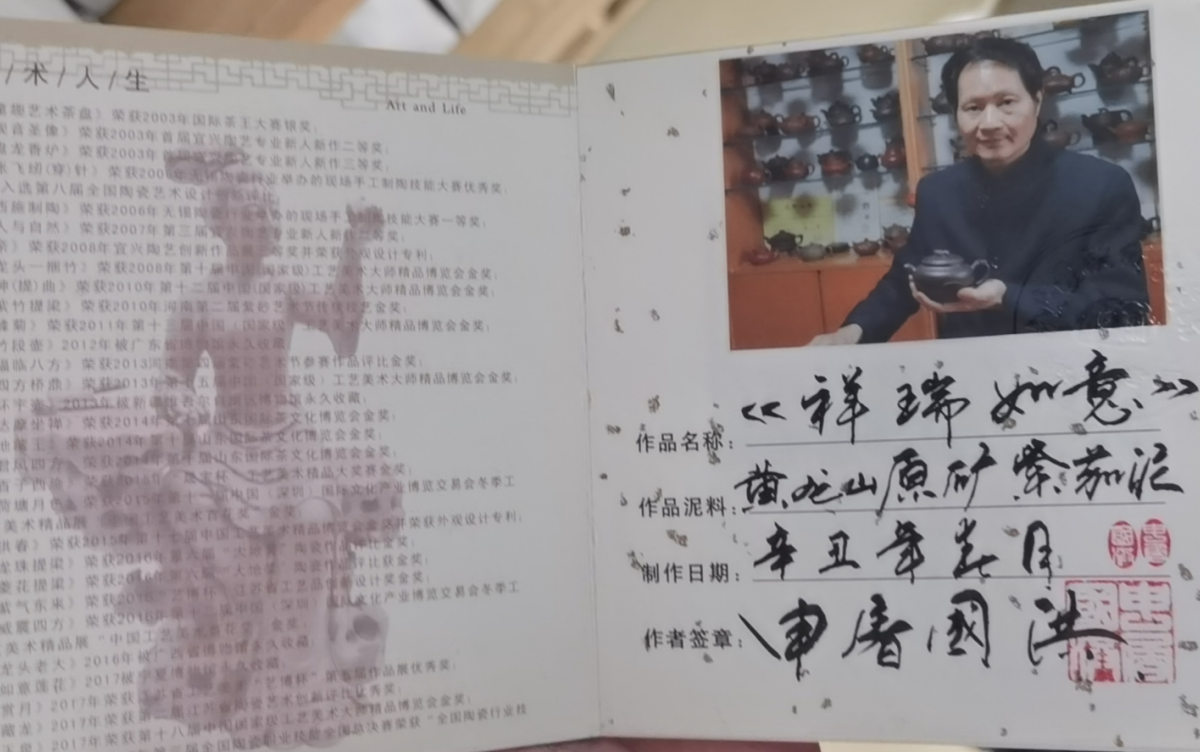
The Science Behind Yixing Clay: Mineral Composition and Effects
When it comes to brewing mastery, the secret of the Yixing clay teapot lies beneath its surface. The renowned Zisha clay, sourced exclusively from Yixing’s Dingshu region, contains a rare blend of minerals that transforms a simple teapot into a flavor-enhancing vessel. It’s not just about tradition—it’s a matter of chemistry.
What Makes Zisha Clay Unique?
Zisha clay includes a hearty dose of iron oxide, quartz, kaolinite, and a variety of trace minerals that distinguish it from other pottery clays. It’s this unique mineral cocktail that infuses Yixing teapots with their distinctive colors—from deep purples to warm reds to pale yellows—and their legendary ability to “breathe.” While porcelain or glass is virtually non-porous, Zisha clay contains a high concentration of microscopic pores. These pores allow the clay to absorb the oils and aromas of tea over time.
| Mineral | Function in Teapot | Flavor Impact |
|---|---|---|
| Iron oxide | Strengthens, colors | Enriches aroma |
| Quartz | Adds porosity | Smooths texture |
| Kaolinite | Adds plasticity | Softens taste |
| Mica | Adds shine | Holds heat |
| Trace minerals | Mine-dependent | Adds flavor notes |
Data Source: “The Role of Mineral Composition in the Taste of Tea Brewed in Zisha Pots” – Tea and Ceramic Interaction Study by the China Tea Science Society (中国茶叶学会)
URL: http://www.ctss.cn/
Data Source: National Geochemical Survey on Yixing Clay Deposits – by the China Geological Survey (CGS)
URL: http://www.cgs.gov.cn/
Here’s how: The mineral structure of Zisha clay is a kind of flavor memory bank. After each brewing, a Yixing clay teapot gradually absorbs the essence of the tea brewed within it. Over time, the clay “learns” the tea, storing the presence and amplifying subtleties that would pass unnoticed in an ordinary porcelain or glass pot.
Impact on Tea Flavor and Aroma
As the naturally-porous Zisha clay of your teapot seasons itself, its color and patina will slowly deepen. Over time, repeated use will gradually coax your teapot into “blooming” as it imbibes the taste of Xishuangbanna, Anxi, or wherever else the terroir of your favorite tea reveals itself. And each pot matures along with tea drinker it follows, infusing each brew with the essence of its personal history. This is why tea masters insist on devoting a clay pot to a single type of tea; no one would want to confuse the clean nuance and resonance of a properly season pot with an unlearned Yixing teapot. Keep in mind: Even after a seasoned Yixing clay teapot has been thoroughly cleaned and stored for years, an exceptionally fine Oolong or Pu-erh will continue to sing out from the lingering breath of a well-used pot. Indeed, many pot collectors describe opening the lid of an old friend to be greeted by the fragrance of hundreds of tea sessions.
Scientific Data: Heat Retention and Brewing Precision
Studies show that the heat-retaining qualities of Yixing clay made possible by its minerality–make them far superior to porcelain or glass. Water temp remain consistent during brewing, flavors are extracted evenly and over-steeping is prevented. Controlling the brewing process in this way helps to unlock the full character of finer-grade teas.
Ask the Expert
“Yixing clay teapots are the only pots that shall mature with use. Their pores capture the soul of tea and through time they shall become as valuable as the great tea leaves themselves” – Yixing Artisan, Chen Mingyuan (Master)
Why it matters
A solid understanding of the science of Yixing clay is essential if one aims to reach the heights of brewing mastery. Correct minerals, appropriate porosity, and the slow seasoning process elevate tea from simple drink to sensory experience. From robust black teas to delicate greens, the chemistry within your Yixing clay teapot ensures your next brew will be a work of art.
Yixing Teapot Craftsmanship: The Art of Zisha Pottery
If you’ve ever held a true Yixing clay teapot in your hands, you’ll notice the difference immediately. Each one is the result of centuries-old skills, meticulous techniques, and a devotion to artistry that sets these vessels apart from ordinary teaware. Crafting a Yixing clay teapot isn’t just pottery—it’s a dance between tradition and innovation, where every step matters.
Traditional Techniques and Artistry
Yixing clay teapots are largely made by hand. Skilled artisans shape the clay without a potter’s wheel, relying on specialized wooden tools, their fingers, and an almost meditative patience. The process begins with selecting and refining raw Zisha clay, which is kneaded until perfectly smooth. The artist then rolls and cuts the clay, assembling the teapot’s body, spout, handle, and lid with precise joins that must fit seamlessly. Step-by-step process: 1.Clay selection and refinement: Only high-quality Zisha clay is used, and impurities are painstakingly removed. 2.Shaping: Artisans use wooden paddles, knives, and molds to shape the teapot, often building it from slabs or coils. 3.Assembly: The spout, handle, and lid are crafted separately and joined while the clay is still damp. 4.Decoration: Some teapots remain unadorned, highlighting the clay’s natural beauty. Others feature intricate carvings, calligraphy, or sculptural flourishes. 5.Firing: The assembled teapot is fired in a kiln at temperatures around 1,100°C, which hardens the clay and brings out its signature hues.
Key Shapes and Their Brewing Impact
Shape is far from just aesthetic—it’s central to brewing mastery. Yixing teapots come in classic forms like the Shi Piao (stone dipper), Ruyi (scepter), and Xi Shi (named after a legendary beauty). Each shape affects how tea leaves unfurl, how heat is retained, and how aromas develop in the pot.
| Shape | Description | Brewing Effect |
|---|---|---|
| Shi Piao | Tapered, angular shape | Good for brewing oolong and black teas |
| Xi Shi | Round, elegant form | Suitable for green and white teas |
| Fang Gu | Square, sturdy body | Retains heat for pu-erh |
| Ruyi | Curved, ornate design | Enhances aroma and flavor release |
Data Source: “Traditional Teapot Design’s Influence on Tea Aroma and Mouthfeel” – Study published in Journal of Tea Science (茶叶科学), Vol. 43
URL (journal site): http://www.tea.gov.cn/kxyj/
Data Source: Zisha Artisan Test Manual and Craft Standardization Guide, published by the CNIPA for PGI-covered Yixing products
URL: http://www.cnipa.gov.cn/art/2020/7/1/art_2225_494.html
Did you know? Artisans pride themselves on the seals they hand stamp or impress on their teapots. Their marks represent their dedication and craftsmanship in their chosen craft. Such marks are meticulously collected by collectors and viewed as a mark of authenticity by the artisans themselves as their work and legacy are remembered.
Master Potters and Artistic Legacy
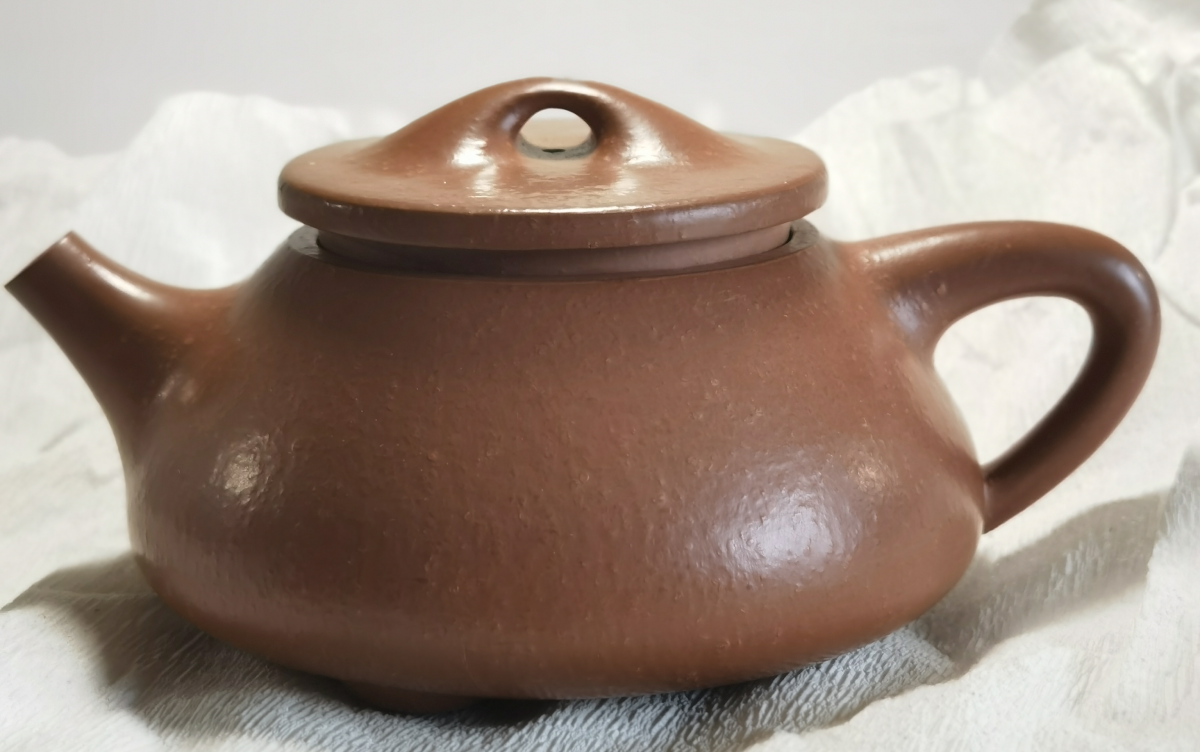
Yixing teapot making has a rich tradition of legendary teapot makers such as Shi Dabin, Chen Mingyuan, Gu Jingzhou, and Jiang Rong. Each individual has made their own stylistic contributions such as different teapot shapes or new decorative techniques. For example, Gu Jingzhou was known for his simplistic and undecorated style that emphasized the clay itself, whereas Jiang Rong was renowned for her floral decorated teapots that would often transform ordinary teapots into miniature sculptural gardens. “Every Yixing teapot is a miniature sculpture, a vessel for both tea and artistry.” — Jiang Rong, Yixing master.
Handcrafted Facts
Case Study: The Xi Shi Teapot
Named after one of the Four Beauties of ancient China, the teapot’s round shape is said to resemble the soft cheeks of Xi Shi. The teapot’s shape isn’t just for aesthetics. Xi Shi teapots are traditionally used to brew delicate green teas. The elegant rounded shape allows leaves to agitate freely and for aromas to fully open up.
Collectability and Value
Exquisite handmade Yixing teapots crafted by master artisans can sell for thousands of dollars at auction. The value is based on the artist, the rarity, and the quality of the clay. Mass-produced teapots made from Yixing clay likely won’t increase in value, but they may be affordable alternatives. These factory-produced teapots may appear very similar to their handmade counterparts, but they will never have the seasoning ability of handmade pots, nor will they ever develop the same beautiful patina or brew as well.
How to Identify Authentic Yixing Clay Teapots
It can be a thrilling experience to dip your toes into the world of Yixing clay teapots. However, many teapots are marketed as handmade when they were in fact made in a factory. Navigating the world of Yixing clay is also challenging due to the prevalence of imitation teapots and mass-produced lookalikes. Knowing that you have the real thing isn’t just a matter of money or aesthetics — it’s an amateur sleuth’s pursuit into both the history of pottery and the techniques of artisanship.
Signs of Genuine Artistry:
Avoiding Fakes and Mass-Produced Lookalikes
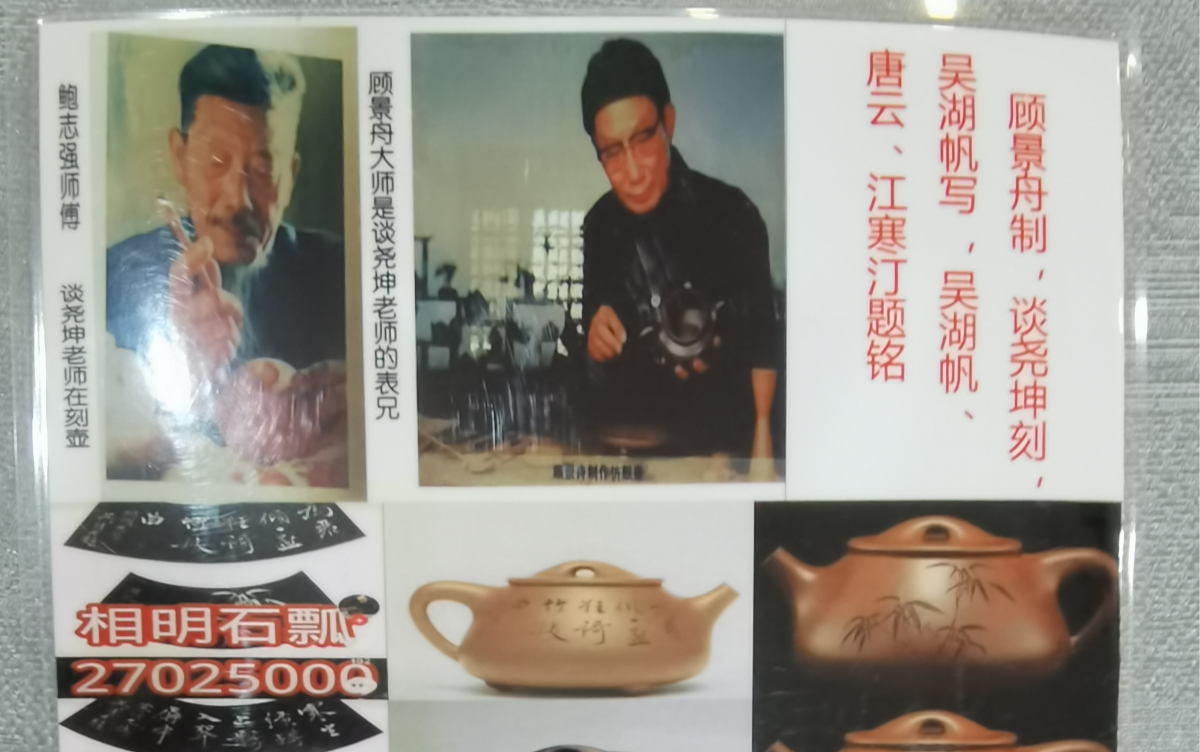
Most of the “Yixing” teapots available are actually made from industrial clay that’s been slip-cast in a mold and mass-produced in a factory. These pots might look like they’re the real deal, but they tend to be decorative pieces, completely lacking the porosity, seasoning potential, and brewing quality of hand-formed teapots. Red Flags: Glossy or glazed interior Brightly colored clay (no natural zisha clay produces pink, bright red, yellow, or blue colors) Machine-like symmetry and lack of artist’s marks Unreasonably cheap price for “handmade” work “A true Yixing teapot is a fingerprint of the artist — unique, imperfect, and full of character.” —Gu Jingzhou, Yixing master
Certification and Provenance
Many specialty sellers offer certificates of authenticity for valuable Yixing teapots. These certificates outline everything from the clay source and artist to the firing techniques used. For antique or rare teapots, it’s all about provenance. Auction houses, museums, and experienced collectors maintain elaborate paper trails about a teapot’s origin, ownership, and significance. Case Study: One eager collector bought a “rare antique Yixing teapot” for a bargain price at a flea market, only later realizing it was slip-cast from commercial clay. The lack of artist’s marks and the glazed interior were the smoking gun. On the other hand, a teapot bought from a trusted specialty dealer came with a certificate of authenticity, a biography of the artist, and even photographs of the teapot in production. Identifying an authentic Yixing clay teapot is more than a checklist – it’s the start of a relationship with a vessel that will enhance your tea for years to come. When you know what to look for, you’ll avoid costly mistakes and find a teapot worthy of brewing mastery.
How to Brew Tea with a Yixing Clay Teapot: A Complete Guide
Brewing tea in a Yixing clay teapot is an art. It blends tradition, technique, and a pinch of personal ritual. The process isn’t just about making a drink — it’s about unlocking the layers of flavor and aroma unique to each variety of tea and each well-seasoned pot. When done right,
Step-by-step brewing instructions
Pairing tea with Yixing teapots
Elevating the experience through pairing an appropriate tea type with the ideal teapot shape and Yixing clay type.
Case Study: Gongfu Brewing Culture
Tea masters originating from Southern regions in China have adopted the Gongfu-style brewing method, alongside using Yixing clay teapots as a means for extracting the most subtle flavours from Oolong and Pu-erh tea. Frequently, tea masters perform up to a maximum of 10 infusions per ritual. With each infusion, the time and temperature is adapted and changed with each pour to extract a unique serene cup, in both flavour, aroma, and mouthfeel; a journey where one experiences the entire flavour profile.
How to Care for Your Yixing Clay Teapot: Cleaning and Maintenance Tips
A genuine Yixing clay teapot is more than just a tool. It’s a brewing companion that becomes more beautiful with age. Proper care and maintenance will preserve its value while enriching the flavor and aroma of your tea. Neglect it, and you risk losing the qualities that make Yixing clay so prized.
Seasoning Your Teapot Before First Use
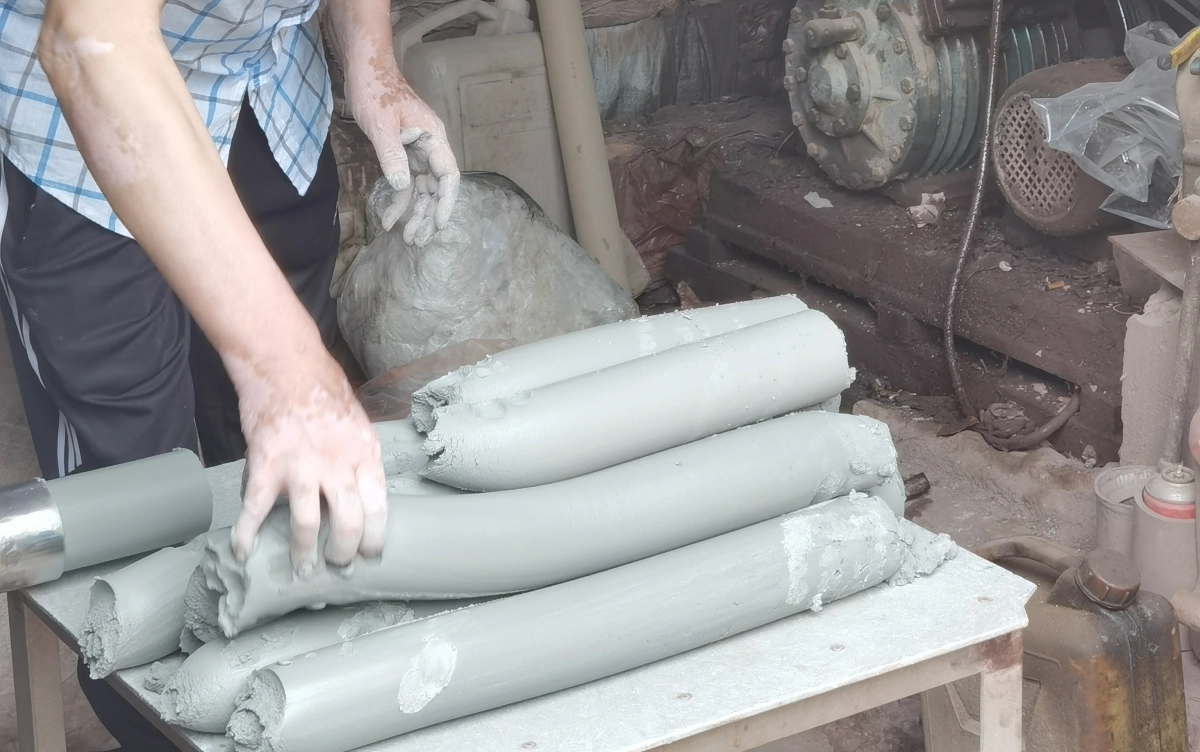
You’ll need to “season” your Yixing teapot before brewing tea for the first time. This simple ritual clears away any residual dust from the factory, and prepares the clay’s pores for tea absorption.
How to Season a Yixing Teapot:
Pro tip: Always dedicate a Yixing teapot to only one type of tea. The porous clay will retain the essence of your chosen leaves, building a patina of flavor over time.
Case Study: A Patina of Time
One collector in Hangzhou has brewed nothing but pu-erh tea in the same Yixing clay teapot for over two decades. The surface of the pot shines with a rich mahogany patina, and—when the lid comes off—a faint aroma of aged tea lingers in the interior. A hint of that complexity seasons each cup it brews, granting a depth of experience no new pot could replicate—a reward for care and single-minded dedication.
Health Benefits of Brewing Tea in a Yixing Clay Teapot
More than a canvas for artistry or vehicle for flavor, the Yixing clay teapot is also prized for its small health benefits. For centuries, tea drinkers have maintained that brewing in Zisha clay not only improves flavor, but brings out the health promoting qualities of the tea itself. Today, both tradition and science help explain why this humble little piece of pottery is still a favorite among health-conscious tea drinkers.
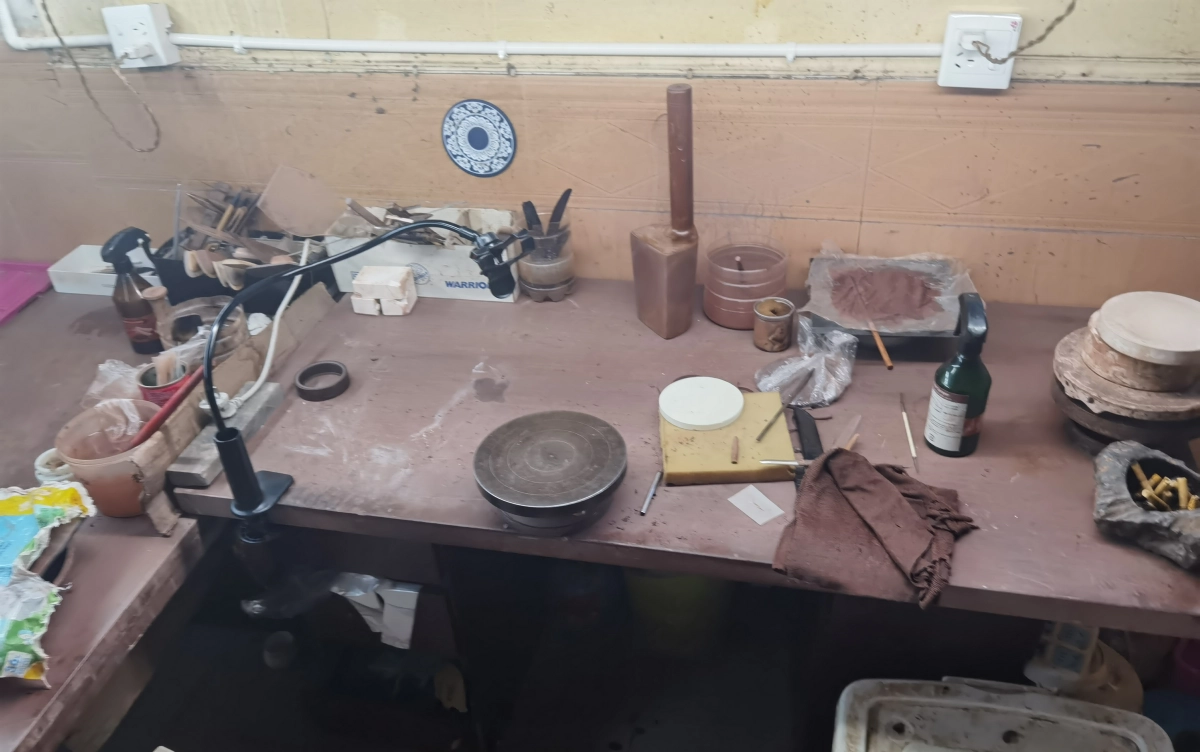
Natural Properties & Health Impact
Zisha clay is a 100% natural material, sourced from deposits of mineral-rich clay in Yixing. It contains iron, magnesium, calcium, and a variety of trace elements beneficial to the body. In contrast to many commercial ceramic materials, minerals, authentic Yixing clay teapots are unglazed, containing no harmful chemicals or dyes.
Top Health Benefits
List: Tea Health Benefits in Yixing Teapots
Scientific Understanding
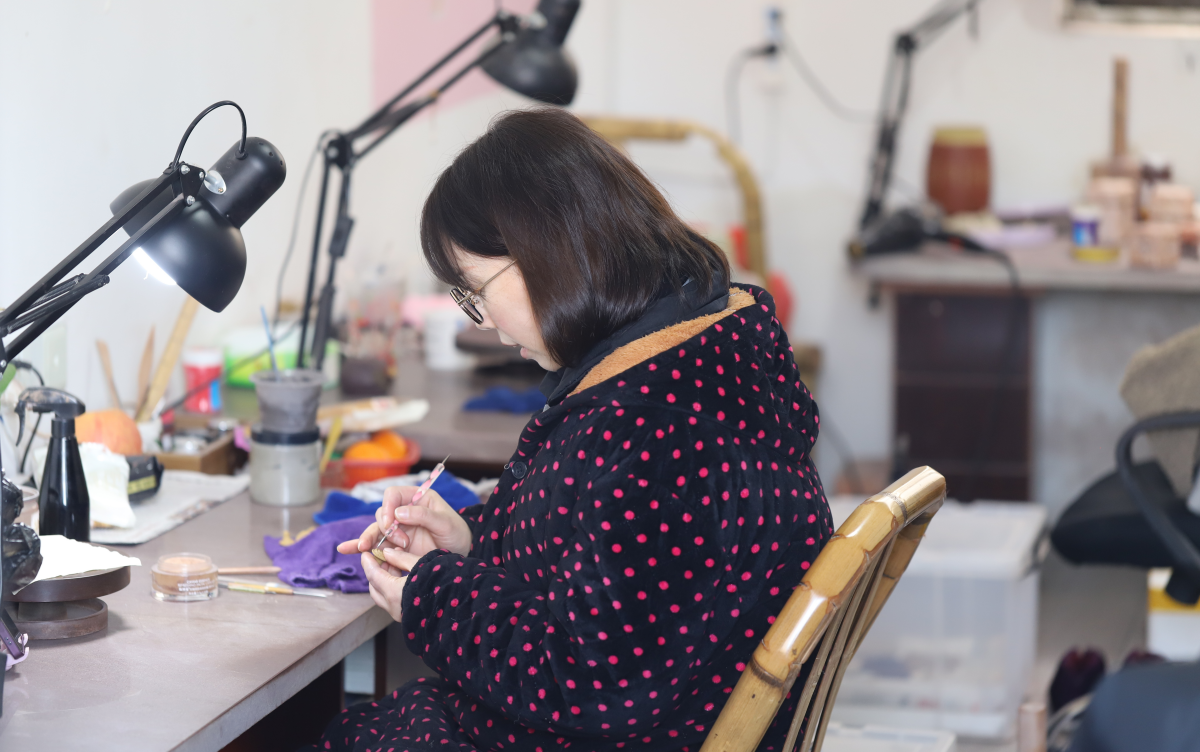
A recent study provided more evidence that the vessel you’re brewing with can impact the chemistry of your tea. The researchers found that Yixing clay’s ability to maintain an even brewing temperature resulted in reduced levels of catechins (natural antioxidants found in tea and other plants) as compared to glass or porcelain pots. That means the anti-inflammatory and anti-aging benefits of your tea just got a little supercharged.
| Vessel Type | Polyphenol Retention | Taste Effect |
|---|---|---|
| Yixing clay | High | Smooth, mellow |
| Porcelain/glass | Medium | Brighter, sharper |
| Metal | Low | Metallic, bitter |
Data Source: Zisha Clay and Tea Brewing Chemistry, in Yixing Zisha Research Compendium (宜兴紫砂研究汇编), published by CNIPA and Jiangsu Ceramics Association
URL: http://www.cnipa.gov.cn/art/2020/7/1/art_2225_494.html
Data Source: “Impact of Teaware Material on Polyphenol Stability and Tea Aroma” – Published in the Journal of Food Science and Technology, Vol. 49, Issue 3
URL: https://link.springer.com/article/10.1007/s13197-012-0672-x
Case Study: The Wellness Ritual
Tea master Liu Wen brews her everyday tea in the same Yixing teapot for more than a decade. She says the tawny vessel is the secret ingredient behind her ritualistic health tonic. Her morning oolong “never upsets my stomach, and I feel more energized and balanced” Liu says, attributing the qualities to the natural minerals in the Zisha clay and the layer of seasoning she’s built over the years. From Yixing Tea Set. The health benefits of tea brewed in a Yixing clay teapot stems from more than what you drink, it is the culmination of centuries of wisdom and the subtle magic of natural materials. Choose an authentic Yixing pot and you’ll be investing in your health – and the pleasure you get from drinking tea every day.
Yixing Clay Teapots (宜兴紫砂茶壶) Collecting: Opportunities for Beginners and Advanced Collectors
The world of Yixing clay teapot collecting is as rich and complex as the tea brewed in these cherished vessels. Whether you are a beginner or an advanced collector, understanding the art, value, and maintenance of Yixing clay teapots can enhance your enjoyment—and your investment.
Collecting: Getting Started and What to Look For
Authenticity and Provenance The most important factor, as we have already discussed, is that the teapot made from genuine Yixing clay. (It also doesn’t hurt if it was made by a competing tea artist!) Whenever possible, you should confirm the provenance—the teapot’s documented history, particularly where it was made. Artisan and Era Teapots made by renowned masters (e.g., Gu Jingzhou, Jiang Rong) or during certain historical periods (Ming, Qing, Republic) are generally more expensive and highly-pursued. That being said, many contemporary artists produce innovative designs and superior-crafted teapots. Shape and Craftsmanship Collectors often pursue particular shapes (Xi Shi, Shi Piao, Fang Gu) or styles of decoration (carved, painted, minimalist). The joinery, lid fit, and quality of finishing will determine much of the artistic merit.
Quick Checklist for Collectors:
Value, Rarity, and Authenticity
Value Factors: Artist reputation: Works from the top master potters can sell for thousands of dollars at auction. Age and condition: Older teapots in good condition are more valuable. Rarity: Limited editions of teapots and one-of-a-kind designs are highly sought-after. Documentation: Certificates of authenticity or auction house records add significant value.
Storage, Display, and Investment
Storage: Store in a clean, dry environment away from sunlight and strong odors. Use padded shelves or displays to keep teapots safe from accidental damage. Display: Show your teapots on open shelves or in locked glass cases. Many collectors rotate their pots, using each for a season to bring out patina and character. Investment: Yixing clay teapots are a specialty—but growing—market. Prices for masterworks have generally increased over time, especially for documented antiques and famous artists. But the greatest return for most collectors is the daily enjoyment and ritual that these teapots cultivate.
Case Study: From Novice to Expert
A tea drinker starts with a simple Xi Shi Yixing teapot purchased from a reputable tea shop. Over the years, they learn to recognize artisan marks, favor certain shapes, and attend tea shows and auctions. Within a few years, the collector has teapots from different eras and artists, each with a story and distinct brewing character. There are teapots for special occasions and others for everyday use—made more enjoyable by the care and personal tradition that these teapots represent.
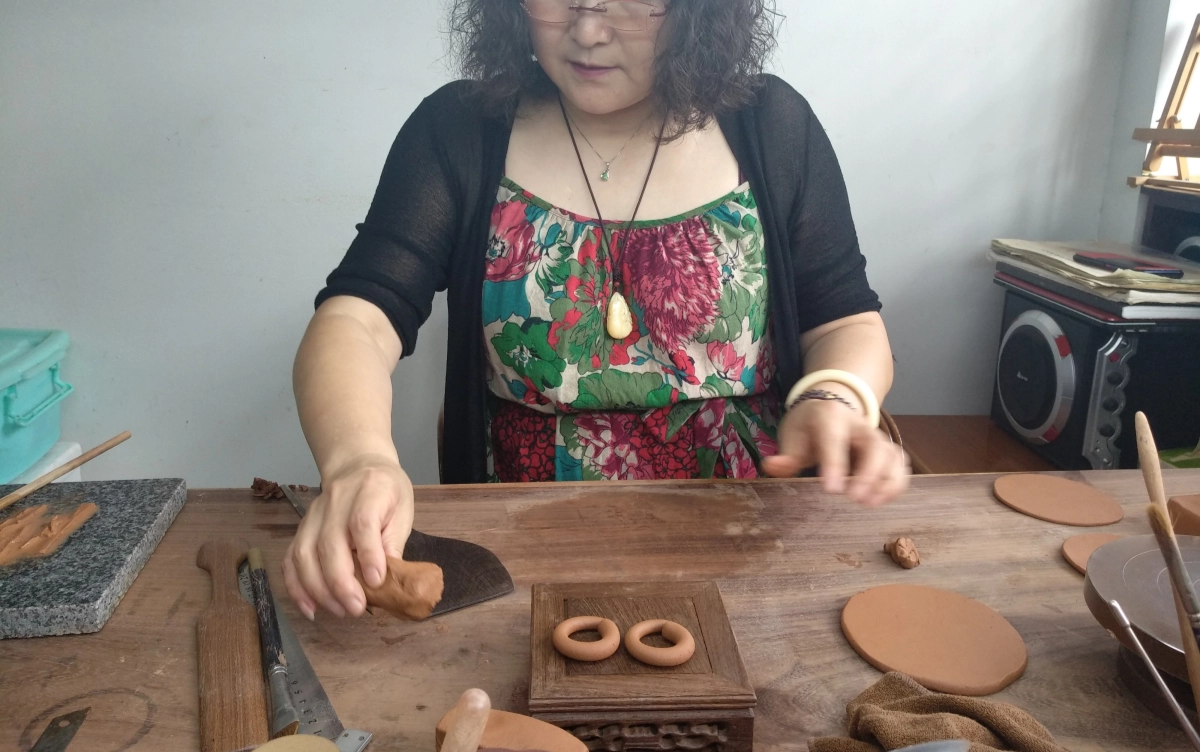
Conclusion: The Timeless Appeal of Yixing Clay Teapot—History, Craftsmanship, and Brewing Mastery
A foray into the world of the Yixing clay teapot discovers a rich saga of a stunning piece of cultural ephemera into the “must-have” brewing tool of every tea lover that succeeds at the intersection of history, craftsmanship science and wellness. From the mineral-rich hillocks of Jiangsu to its custodians in the master potters and tea lovers in every corner of the globe, the Yixing clay teapot is elevating the art form of tea brewing one pot of leaves at a time.




